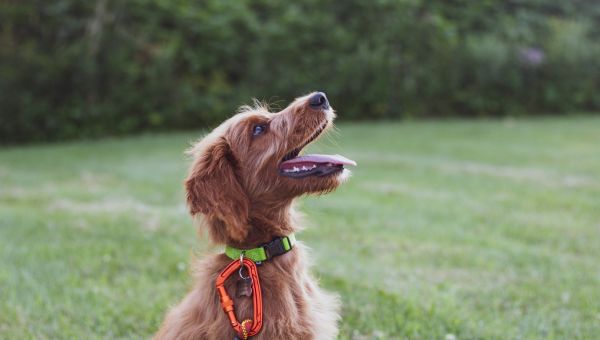Well, I think my dogs were at the back of the queue gossiping when they gave out learning skills, because each one does know one or more, but not the same ones at the same time! But in all fairness, they are all rescued animals, so goodness knows what they have been through in their little lives, and I don’t think obedience classes were top of the list.
But even old dogs can be taught new tricks apparently, so I live in hope!
Training a dog does take time and patience, and several different training methods can be used apparently, so I guess there is no ‘one size fits all’ in this area, though one or two are more favoUrable than others.
Can you recall when you were a child, if you cleaned your room or did the dishes you earned your pocket money? Made you want to do it again next week, right? This is positive reinforcement, but if your dog gets it right, it’s treats or toys and not money. Positive reinforcement means that if your dog catches on to a command, let’s say ‘sit’ in this example, it gets a treat, a special toy or maybe a verbal praise - harsh corrections are not used, and undesirable behaviour is ignored. It’s a good method for dogs who are ‘soft’ or tend to shut down if spoken to sharply. Because the dog gets rewarded for its response, it is likely to learn the connection. Once one command is learned, you can move onto the next. A bright dog will soon catch on to what pleases you and what it can get out of it!
Another method is the ‘clicker’ method, which is similar to positive reinforcement. You will have to work on teaching your dog the ‘marker’ sound - it could be a clicker, a finger snap, a whistle - even a click of the tongue. The value of the sound is that it tells your dog exactly which behaviour you’re rewarding. By clicking at the right time, you ‘mark’ the moment your dog did what you wanted. So rather than having to guess what you liked, the click tells your dog precisely what they did correctly. For example, if you’re training your dog to sit, you would click at the moment your dog’s butt hit the floor. Of course, the click or sound won’t mean a thing to your dog unless you follow through with the reward!
I wondered how training a dog to become a guide dog for blind people works, and apparently positive reinforcement is used in exactly the same way. The puppies are carefully bred and selected for their abilities to learn, and a lot of time and effort goes into their training, everything from socialising to working support. But their training will only go so far – they can be trained to lead a person round an obstacle, to stop for changes in the height of steps, but can’t be taught when it is safe to cross a road or to read traffic signals, so a certain amount of training is needed by the person they are paired with.
While there are many breeds of dogs that would be able to do the job, certain breeds rise head and shoulders above them all – german shepherds, labradors, golden retrievers and crosses of both these latter breeds have proved to have the intelligence – all have the right temperament and willingness to work, and thrive on praise. But not all puppies make the grade – those with short attention spans, who maybe wander off before their task is completed – actually make really good pets for sighted people, and the waiting list is almost as long as that for a suitable guide dog!
All dogs have a great sense of smell, with scientists estimating they have 50 scent receptors to a human’s one, so some breeds make good detection dogs, and these can be trained to sniff out drugs, blood, explosives – even illicit mobile phones.
I wonder if mine can be trained to find my missing socks?
Marilyn writes regularly for The Portugal News, and has lived in the Algarve for some years. A dog-lover, she has lived in Ireland, UK, Bermuda and the Isle of Man.

















